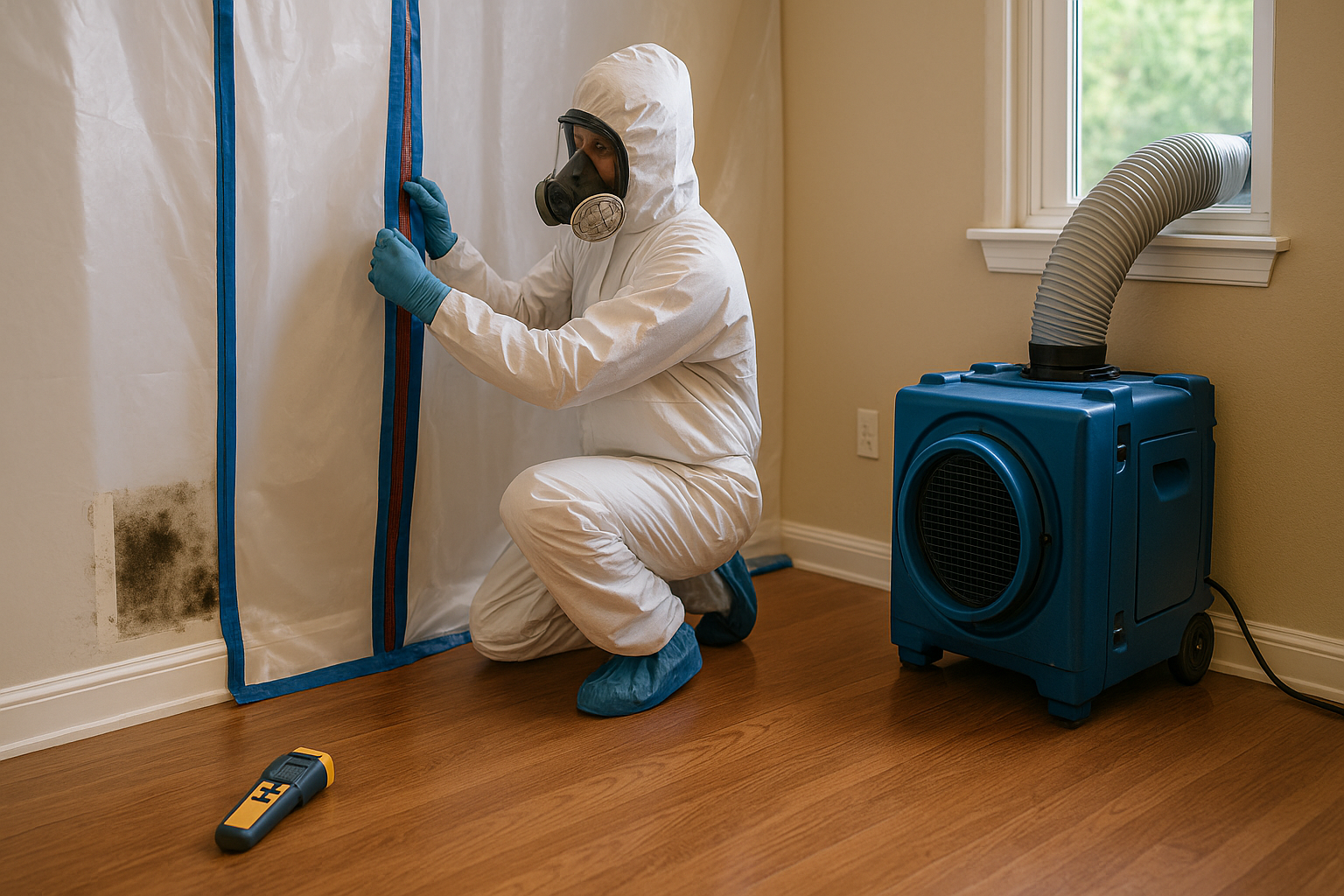
Mold Mitigation & Remediation
When you call Gulfstream Restoration, our IICRC-certified technicians respond fast to stop mold at the source, contain the affected areas, and restore healthy indoor air. We follow industry-standard protocols (IICRC S520) to protect your family, team, and property, safely, thoroughly, and with documentation your insurer will accept.
Mold growth often follows roof leaks, appliance overflows, storm damage, or hidden plumbing issues. Even minor moisture problems can escalate into visible colonies, odors, and health concerns. Don’t tackle it alone, proper containment, negative air, and HEPA filtration are critical to avoid cross-contamination. If you’ve had water damage or suspect hidden moisture, contact an IICRC-certified professional immediately.
Left untreated, mold can spread quickly behind walls, under floors, and in HVAC systems, driving up costs and risks. Our team isolates the problem, removes contaminated materials when necessary, and addresses the moisture source so growth doesn’t return.
What to Watch For (Early Signs of Mold)
- Persistent musty or “earthy” odors, especially after rain or AC cycles
- Spotting/discoloration on drywall, ceilings, baseboards, or around windows
- Allergy-like symptoms indoors: coughing, wheezing, headaches, irritated eyes
- Humidity/condensation, warped finishes, or peeling paint
- Recent water leaks, roof issues, or prior flooding
Our Mold Mitigation Process (IICRC-Guided)
- Inspection & Moisture Mapping – Thermal imaging, hygrometers, and meters to locate hidden moisture.
- Containment & Negative Air – Isolate the work zone with plastic barriers and establish negative pressure to prevent spread.
- Air Filtration (HEPA) – Continuous HEPA air scrubbers capture spores and particulates.
- Source Control & Removal – Safe removal of affected porous materials (as needed) and detailed cleaning of salvageable surfaces.
- Targeted Treatment – Mechanical removal first; then appropriate antimicrobial/biocide applications per material and conditions.
- Drying & Dehumidification – Address the moisture root-cause; stabilize to safe, dry standards.
- HEPA Vacuum & Detailed Wipe-Down – Final clean of all surfaces inside the containment.
- Verification & Documentation – Moisture re-checks, photo logs, and optional third-party clearance testing when required by scope or insurer.
Why Gulfstream Restoration?
- IICRC-Certified Technicians with specialized mold training
- 24/7 Rapid Response for assessment and containment
- Insurance-Friendly Documentation with photos, readings, and scope detail
- Root-Cause Moisture Fixes to reduce recurrence
- Respect for Your Space: clean containments, clear communication, and careful protection of unaffected areas
Health & Safety First
Mold affects each person differently, but sensitive groups (children, older adults, people with asthma or allergies) may react sooner. If you notice symptoms that improve when you leave the building, schedule an assessment. Proper containment and HEPA filtration are essential to reduce exposure during remediation.
FAQs (Mold Mitigation)
How fast should I act?
Immediately. Mold can begin colonizing within 24–48 hours of a moisture event.
Can I just spray and wipe?
Surface sprays alone won’t solve hidden moisture or spore spread. Proper containment, removal, and drying are key.
Will insurance cover it?
Coverage varies by policy and cause. We provide estimates, photos, moisture logs, and scope notes to support your claim.
Do I need clearance testing?
Some jobs benefit from third-party post-remediation verification. We’ll advise based on project scope and your insurer’s requirements.
How do I prevent mold from returning?
Fix the moisture source, keep indoor humidity ~30–50%, maintain HVAC, and address small leaks immediately.

